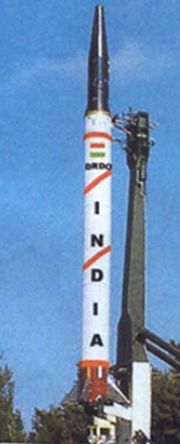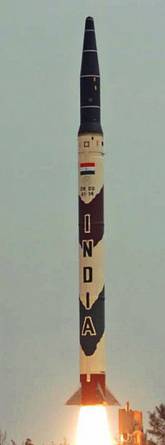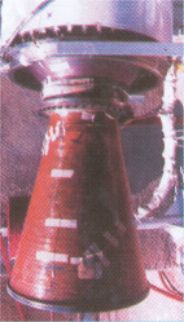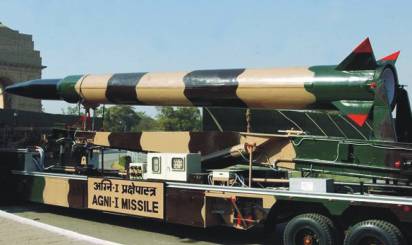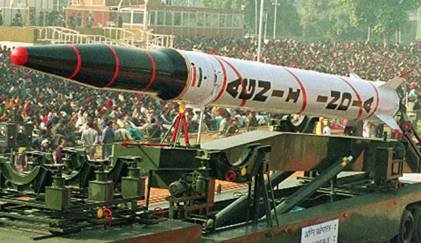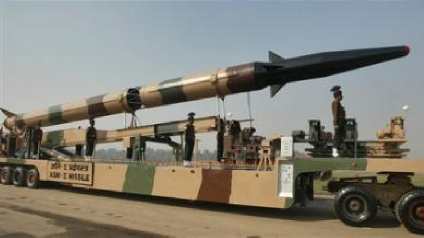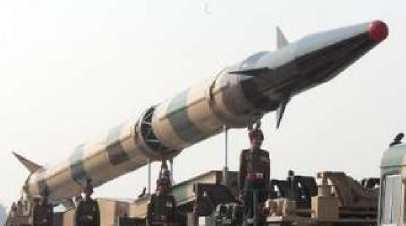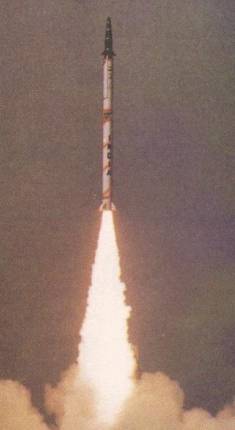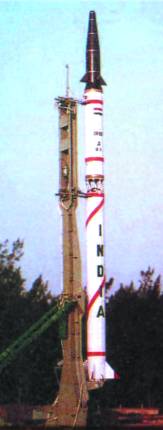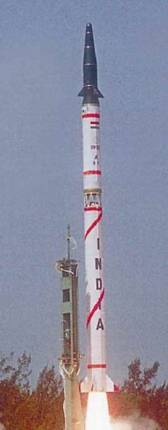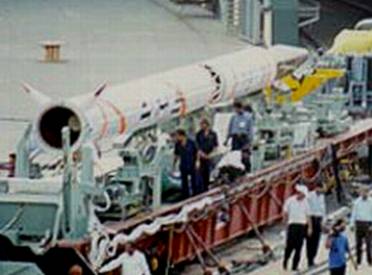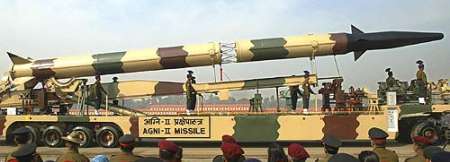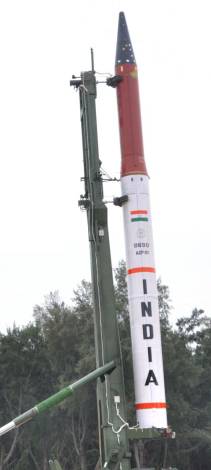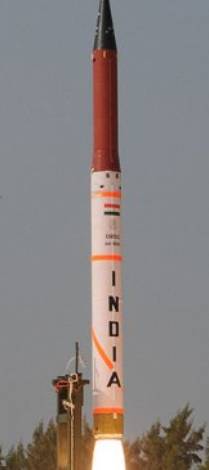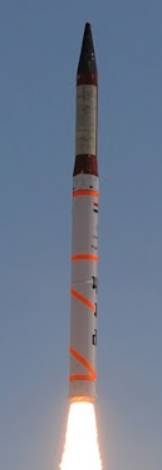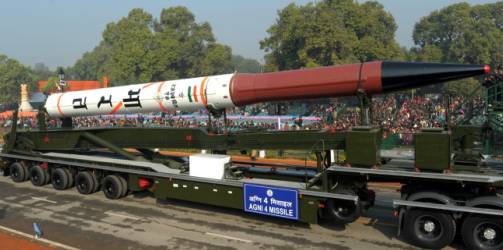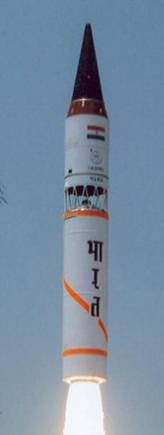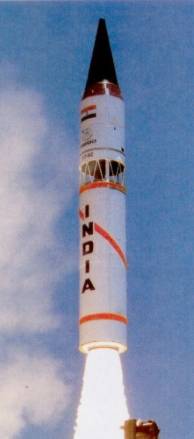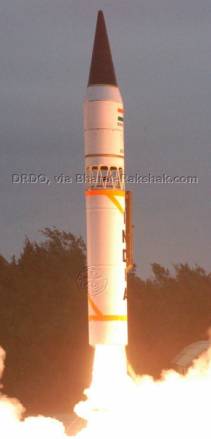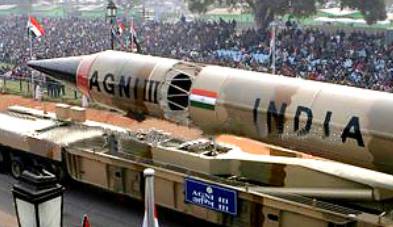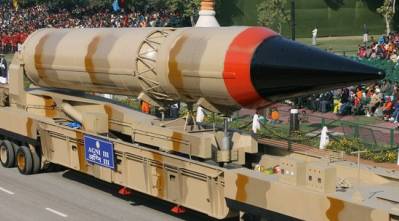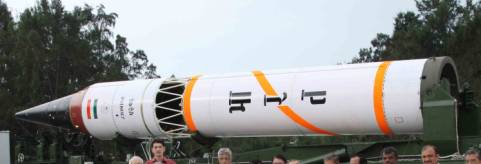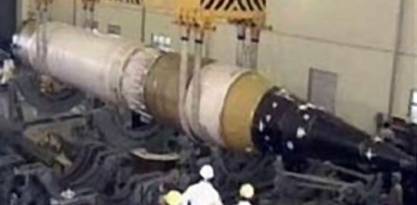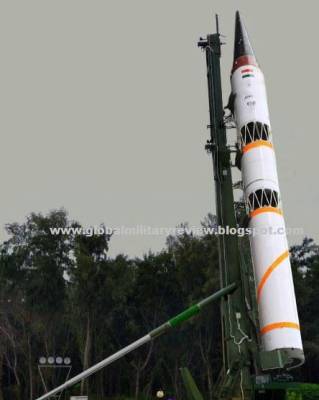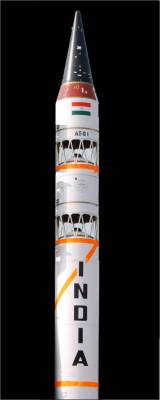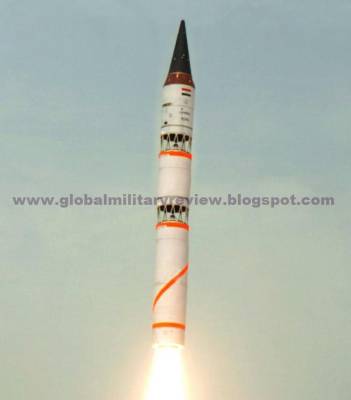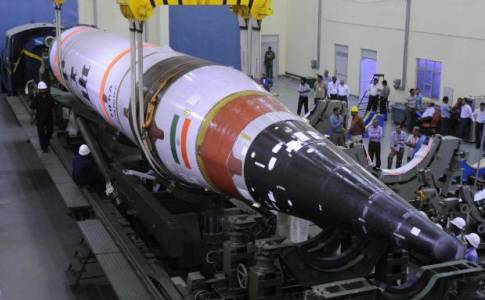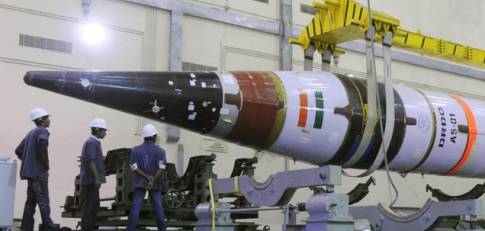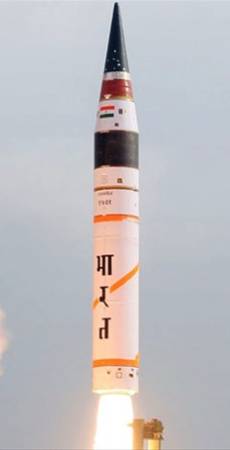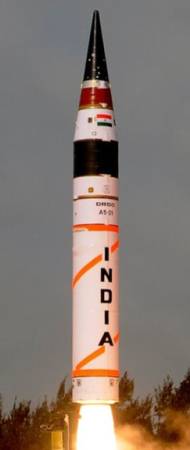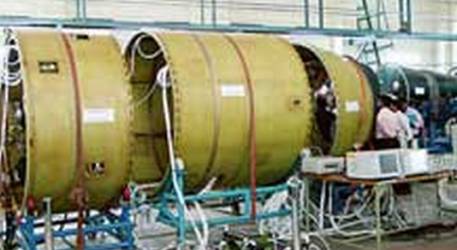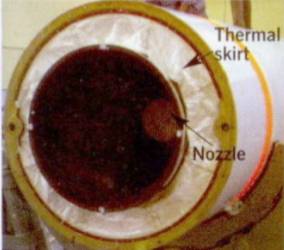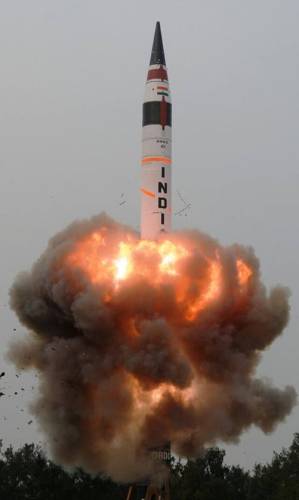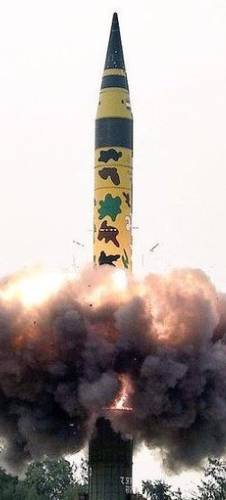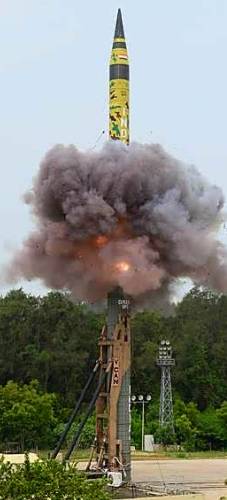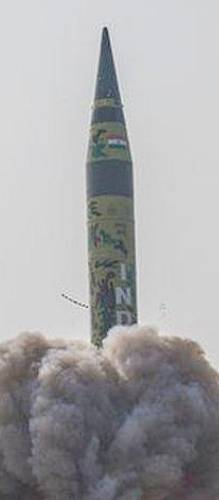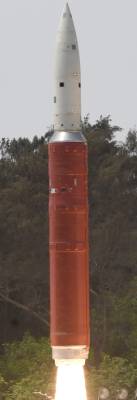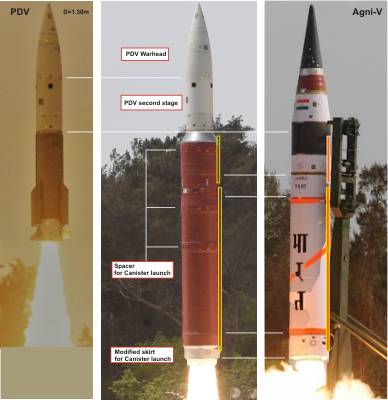|
|
|||||||||||||||||||||||||||||||||||||||||||||||||||
|
|
|||||||||||||||||||||||||||||||||||||||||||||||||||
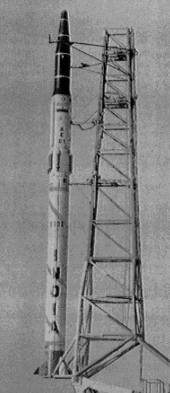
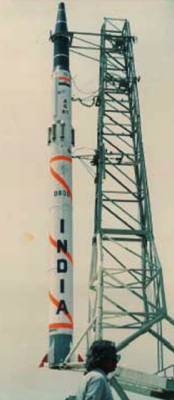 |
The original Agni-TD was an amalgam of the
Prithvi-I and the SLV-3 booster. The Agni-TD is a two-stage missile with the
first stage using the first-stage solid-fuel booster motor of the SLV-3 satellite
launch vehicle. This marked the first time that India had used directly a
component of its civilian space research program for military purposes. The
Agni-TD was a cheap test vehicle to prove re-entry and guidance technology
for use on a more advanced platform. The missile used a solid booster that
was improved but similar to S-1 stage. Instead of developing a new solid motor
for the second stage, which would have involved significant delays, it used
a shortened version of the liquid fuelled Prithvi-I motor. |
||||||||||||||||||||||||||||||||||||||||||||||||||
|
Technical details
|
|||||||||||||||||||||||||||||||||||||||||||||||||||
| The
Agni-I is a single stage version of the Agni-II missile. It stands at 15 metres,
weighs 12 tons and serves as a medium range ballistic missile. The missile
was developed when the need for an intermediate range missile – addressing
the range gap between the Agni-II and the Prithvi. The Agni-I is effectively
the Agni-II minus it's second stage. However this configuration puts greater
'G force' stresses on the RV and avionics, when the stage completes (about
18G instead of Agni-II's maximum of ~9G) its journey. The propellant used in Agni-I consists of HTPB (hydroxyl-terminated polybutadiene) solid propellant. |
|||||||||||||||||||||||||||||||||||||||||||||||||||
|
First stage nozzle |
HSTDV launcher |
||||||||||||||||||||||||||||||||||||||||||||||||||
|
|
|
||||||||||||||||||||||||||||||||||||||||||||||||||
|
|
|||||||||||||||||||||||||||||||||||||||||||||||||||
|
Technical details
|
|||||||||||||||||||||||||||||||||||||||||||||||||||

